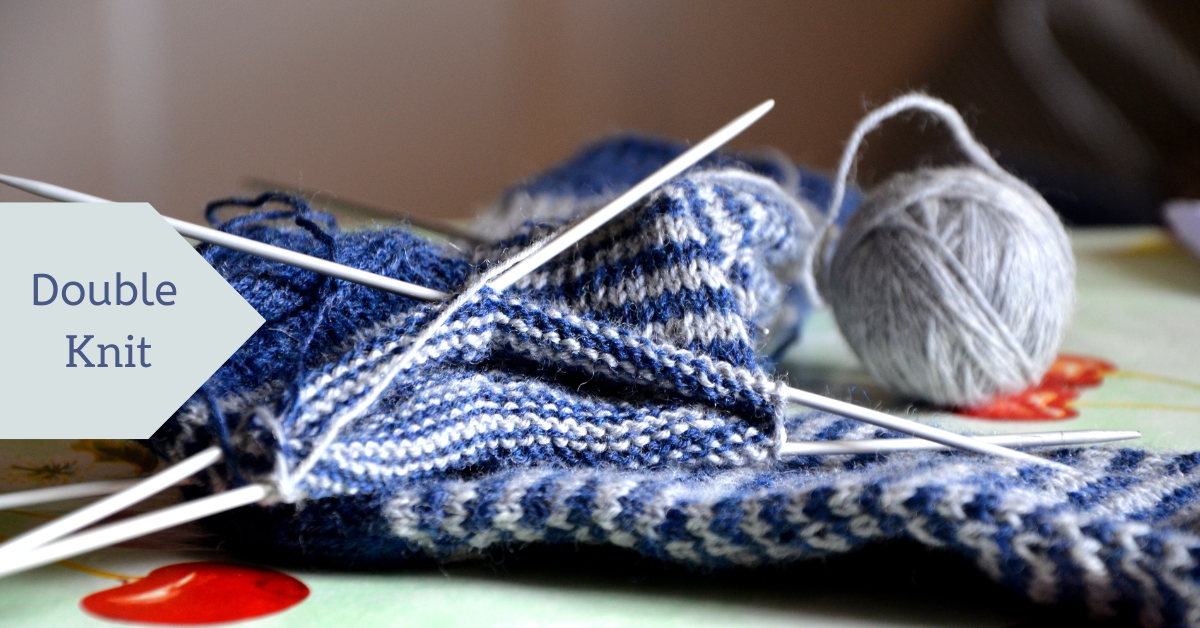What Is Double Knit in Knitting?
Double knitting, often referred to as double knit, is a versatile and visually appealing technique that creates a reversible, double-layered fabric. Unlike typical knitting methods that produce a single layer of stitches, double knitting allows you to knit two fabrics at the same time—back-to-back and interlocked. The result is a thick, squishy fabric that’s perfect for scarves, blankets, pot holders, and more.
Double knitting is not only useful for its warmth and strength but also for its ability to create mirrored colorwork designs that look beautiful on both sides.
Why Use Double Knit?
Double knit projects are popular among both beginner and advanced knitters because of the many benefits this technique offers:
- Reversible fabric: Both sides of your work will look polished and complete.
- Thick and warm: The double layer traps heat, making it ideal for cold-weather accessories.
- No curling: Unlike stockinette stitch, double knitting lays flat naturally.
- Creative colorwork: You can use contrasting colors to create motifs or patterns that appear on both sides, in reverse.
Tools and Materials for Double Knitting
Before you begin your first double knit project, make sure you have:
- Two colors of yarn: For colorwork designs, choose high-contrast shades.
- Knitting needles: A size that suits your yarn, typically slightly larger to accommodate the extra thickness.
- Stitch markers: Useful to mark pattern repeats or row ends.
- A simple pattern (optional): Start with a basic pattern to build comfort with the technique.
How Does Double Knitting Work?
The core of double knitting is alternating between two yarns while working each stitch pair: one for the front fabric, and one for the back. You’ll knit one stitch with one color, and purl the next stitch with the other color, repeating across the row.
For example, if you’re using Color A and Color B:
- Knit 1 with Color A (front)
- Purl 1 with Color B (back)
This creates two separate layers of fabric joined together along the edges.
Casting On for Double Knitting
There are a few ways to cast on for double knitting, but one of the most popular is the two-color long-tail cast-on. This method casts on stitches for both layers at once.
Steps:
- Hold both yarns together and create a slip knot with both colors.
- Separate the yarns in your hand like a regular long-tail cast-on: one color over your thumb and one over your index finger.
- Alternate loops from each color to create your cast-on stitches—this sets up the base for both layers.
Basic Double Knitting Row
Let’s say you’ve cast on 20 stitches (10 stitch pairs). Here’s how you would knit a row:
- With both yarns held together, knit with Color A, keeping Color B to the back.
- Then purl with Color B, holding Color A to the back.
- Repeat this knit one/purl one combo across the row.
Every stitch pair (K1 with A / P1 with B) builds both sides of the fabric at once.
Reading Double Knitting Patterns
Many double knit charts show both sides of the fabric, meaning every stitch is represented twice—once for the front and once for the back.
- Solid squares usually indicate knit stitches in Color A.
- Hollow squares may indicate purl stitches in Color B.
- Remember: in double knitting, what you knit with one yarn shows on one side, and what you purl with the other yarn shows on the reverse side.
It may take a few tries to get used to reading double knit charts, but they make it easier to design and understand two-sided colorwork patterns.
Common Double Knit Projects
Here are some ideas for beginner and intermediate double knit items:
- Scarves with mirrored motifs or names
- Blankets with pattern blocks or reversible stripes
- Hats for extra warmth
- Potholders and mug rugs with dense, heat-resistant texture
- Phone or tablet covers with built-in thickness
Tips for Successful Double Knitting
- Practice on swatches: Try a few rows with scrap yarn before starting your main project.
- Watch your tension: Keep your floats (the unused yarn on each stitch) loose to avoid puckering.
- Use a row counter: It’s easy to get lost in stitch pairs.
- Check both sides regularly to ensure your pattern is mirrored properly.
- Start with simple patterns: Basic stripes or blocks are great for beginners.
Double Knit vs. Double Knitting Yarn Weight
It’s worth noting that “double knitting” (or DK weight yarn) is also a yarn category, not just a technique. DK yarn is lighter than worsted weight and heavier than sport weight. Don’t confuse DK yarn with the double knit technique—though you can use DK yarn for double knitting if you want a medium-weight project.
Final Thoughts
Double knit is one of the most rewarding techniques in the knitting world. While it may seem intimidating at first glance, once you understand the basic concept of knitting and purling with two yarns at the same time, you’ll discover endless possibilities for warm, stylish, and fully reversible creations.
Whether you’re interested in colorwork, making functional accessories, or adding a creative edge to your knitting, double knitting opens a world of opportunity for impressive and practical projects.

